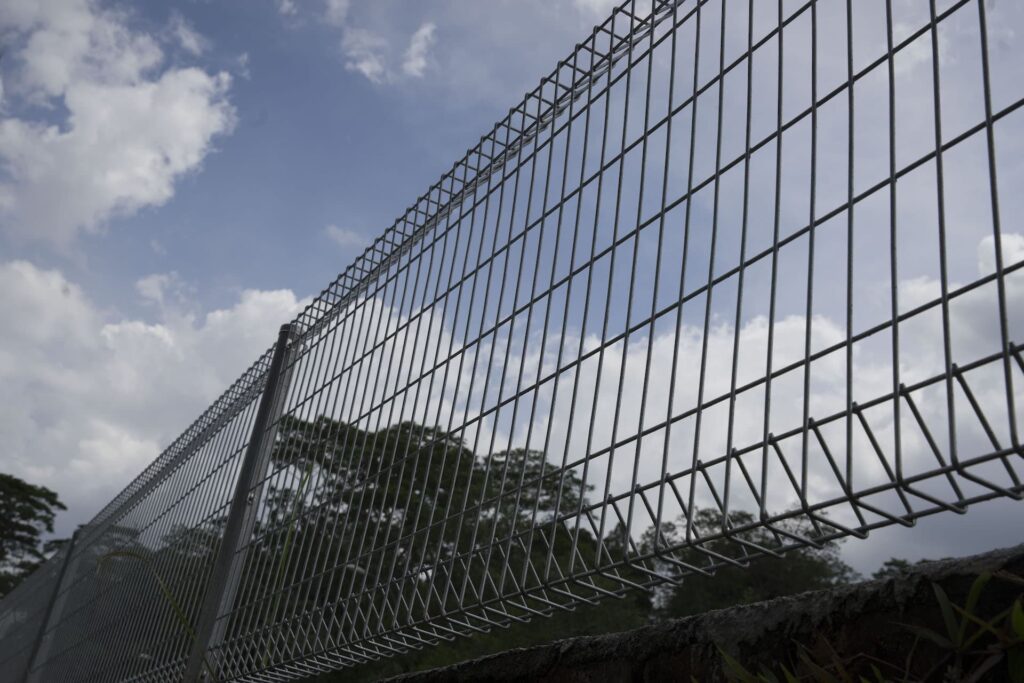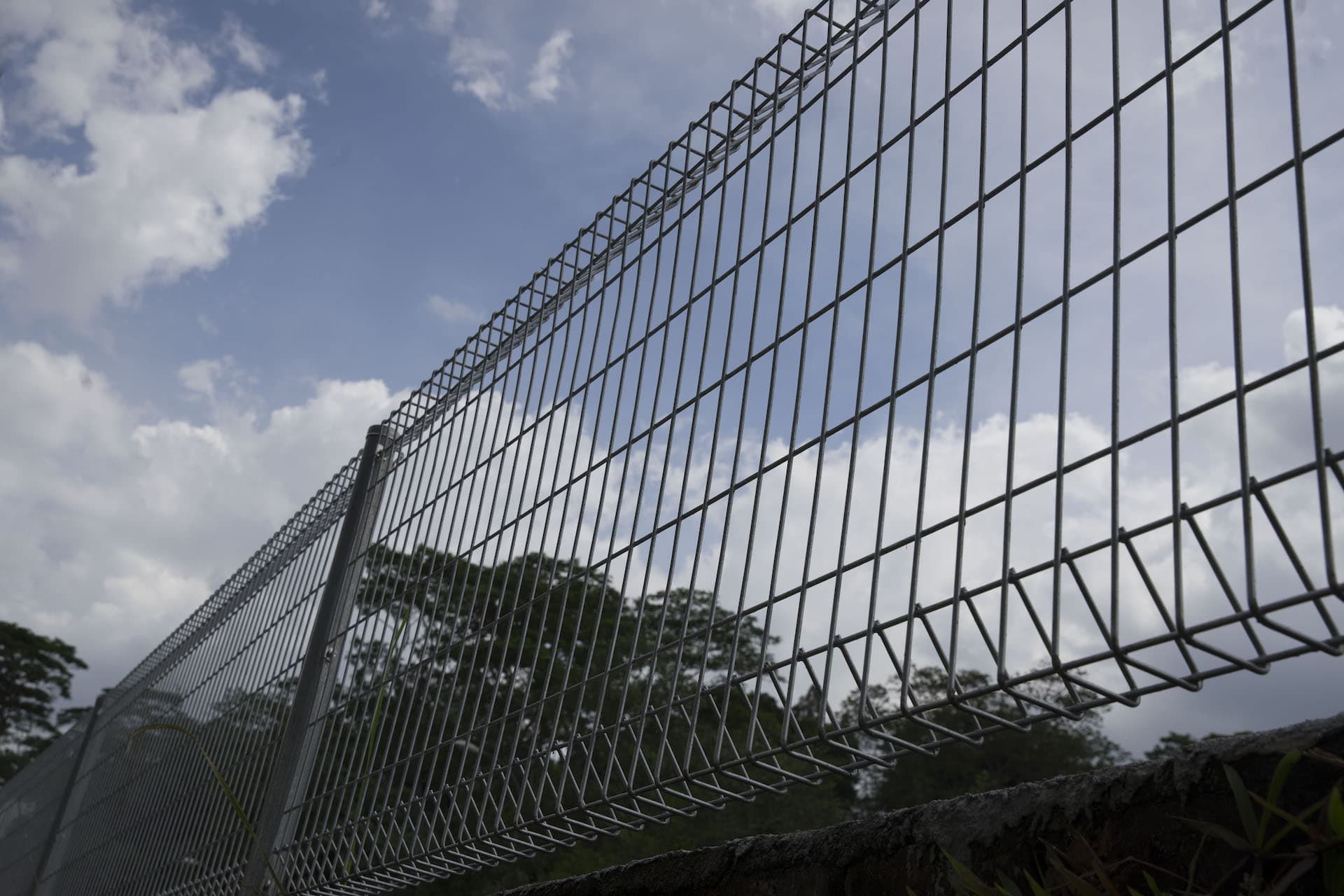
The Ultimate Guide to Plastic Mesh Fence: Durability, Applications, and Installation
In the realm of fencing solutions, the plastic mesh fence has emerged as a versatile and cost-effective option for a wide array of applications. From garden protection to construction site safety, its lightweight nature, durability, and ease of installation make it a popular choice for both residential and commercial users. This comprehensive guide will delve into the various aspects of plastic mesh fence, exploring its benefits, applications, installation techniques, and maintenance tips.
What is Plastic Mesh Fence?
A plastic mesh fence is a type of fencing made from durable plastic materials, typically polyethylene or polypropylene. It is characterized by its mesh-like structure, which allows for airflow and visibility while providing a physical barrier. The mesh is created by interlacing or weaving plastic strands together, forming a grid pattern. This construction offers strength and flexibility, making it suitable for diverse environments and purposes.
The popularity of plastic mesh fence stems from its many advantages over traditional fencing materials like wood or metal. It is resistant to rust, rot, and insect damage, making it a long-lasting and low-maintenance option. Additionally, its lightweight nature simplifies transportation and installation, reducing labor costs and time. Its affordability is also a significant factor, particularly for large-scale projects or temporary fencing needs.
Benefits of Using Plastic Mesh Fence
Choosing a plastic mesh fence offers a multitude of benefits, making it a practical and economical solution for various fencing requirements:
- Durability: High-quality plastic mesh fence is resistant to weathering, UV degradation, and impact, ensuring a long lifespan even in harsh environmental conditions.
- Lightweight: Its lightweight nature makes it easy to handle, transport, and install, reducing labor costs and time.
- Cost-Effective: Compared to traditional fencing materials, plastic mesh fence is significantly more affordable, making it an excellent option for budget-conscious users.
- Easy Installation: The simple installation process requires minimal tools and expertise, allowing for quick and efficient setup.
- Low Maintenance: Plastic mesh fence requires little to no maintenance, saving time and money on upkeep.
- Versatility: Available in various sizes, colors, and mesh patterns, plastic mesh fence can be customized to suit specific needs and aesthetic preferences.
- Safety: It provides a safe and effective barrier for gardens, construction sites, and other areas, preventing unauthorized access and potential hazards.
- Visibility: The mesh structure allows for airflow and visibility, making it ideal for applications where clear lines of sight are important.
- Environmentally Friendly: Many plastic mesh fence products are made from recycled materials, making them an eco-friendly choice.
Applications of Plastic Mesh Fence
The versatility of plastic mesh fence allows it to be used in a wide range of applications, catering to diverse needs and industries:
Garden Fencing
Plastic mesh fence is a popular choice for garden fencing, protecting plants from animals and providing a visual barrier. It can be used to create enclosures for vegetable gardens, flower beds, and newly planted trees. The mesh structure allows for airflow and sunlight penetration, promoting healthy plant growth.
Construction Site Safety
In construction sites, plastic mesh fence serves as a safety barrier, preventing unauthorized access and protecting workers from potential hazards. It can be used to delineate work zones, create temporary enclosures, and control pedestrian traffic. The bright colors and high visibility of the fence enhance safety awareness.
Poultry and Animal Enclosures
Plastic mesh fence is suitable for creating enclosures for poultry, livestock, and other animals. It provides a secure and humane environment, preventing escapes and protecting animals from predators. The mesh size can be adjusted to suit the specific needs of different animals.
Snow Fencing
In areas with heavy snowfall, plastic mesh fence can be used as a snow fence, preventing snowdrifts from accumulating on roads and driveways. It is installed perpendicular to the prevailing wind direction, creating a barrier that traps snow and reduces the risk of snow-related accidents.
Event Management
Plastic mesh fence is often used in event management to control crowds, delineate restricted areas, and create temporary enclosures. It is easy to install and remove, making it a convenient solution for outdoor events such as concerts, festivals, and sporting events.
Erosion Control
In erosion control applications, plastic mesh fence can be used to stabilize slopes, prevent soil erosion, and promote vegetation growth. It is installed along the contour of the land, creating a barrier that traps sediment and reduces runoff.
Temporary Fencing
Plastic mesh fence is an ideal solution for temporary fencing needs, such as construction sites, events, and short-term projects. It is easy to install and remove, allowing for quick and efficient setup and takedown. Its lightweight nature simplifies transportation and storage.
Installation Guide for Plastic Mesh Fence
Installing a plastic mesh fence is a relatively simple process that can be accomplished with basic tools and minimal expertise. Here’s a step-by-step guide:
- Planning and Preparation: Determine the area you want to fence and mark the perimeter with stakes and string. Ensure you have all the necessary materials, including the plastic mesh fence, fence posts, zip ties or wire, and any necessary tools.
- Installing Fence Posts: Space the fence posts evenly along the perimeter, typically 6-8 feet apart. Use a post-hole digger or shovel to create holes for the posts. Set the posts in the holes and secure them with concrete or packed soil.
- Attaching the Mesh: Unroll the plastic mesh fence and attach it to the fence posts using zip ties or wire. Start at one end and work your way along the perimeter, ensuring the mesh is taut and secure.
- Securing the Bottom Edge: Secure the bottom edge of the plastic mesh fence to the ground using stakes or ground staples. This will prevent animals from digging under the fence and ensure a secure barrier.
- Finishing Touches: Trim any excess mesh and ensure all zip ties or wire are securely fastened. Inspect the fence for any gaps or weak points and reinforce them as needed.
Maintenance Tips for Plastic Mesh Fence
Plastic mesh fence requires minimal maintenance, but following these tips can help extend its lifespan and maintain its appearance:
- Regular Cleaning: Periodically clean the fence with a mild soap and water solution to remove dirt, debris, and algae.
- Inspect for Damage: Regularly inspect the fence for any signs of damage, such as tears, holes, or loose connections. Repair any damage promptly to prevent further deterioration.
- UV Protection: Apply a UV protectant spray to the fence to prevent fading and cracking caused by prolonged exposure to sunlight.
- Winter Maintenance: In areas with heavy snowfall, clear snowdrifts from the fence to prevent excessive stress and potential damage.
Choosing the Right Plastic Mesh Fence
Selecting the appropriate plastic mesh fence is crucial for ensuring optimal performance and longevity. Consider the following factors when making your choice:
- Material: Choose a plastic mesh fence made from high-quality polyethylene or polypropylene for durability and weather resistance.
- Mesh Size: Select the appropriate mesh size based on the application. Smaller mesh sizes are suitable for preventing small animals from entering, while larger mesh sizes allow for better airflow and visibility.
- Thickness: Consider the thickness of the plastic strands. Thicker strands provide greater strength and durability, making the fence more resistant to impact and tearing.
- Color: Choose a color that blends in with the surrounding environment or provides high visibility, depending on your needs.
- UV Resistance: Ensure the plastic mesh fence is UV resistant to prevent fading and cracking caused by prolonged exposure to sunlight.
- Supplier Reputation: Purchase your plastic mesh fence from a reputable supplier to ensure quality and reliability.
Conclusion
The plastic mesh fence offers a versatile, cost-effective, and durable fencing solution for a wide range of applications. Its lightweight nature, ease of installation, and low maintenance requirements make it a popular choice for both residential and commercial users. By understanding its benefits, applications, installation techniques, and maintenance tips, you can make an informed decision and choose the right plastic mesh fence for your specific needs. Whether you’re protecting your garden, securing a construction site, or creating an animal enclosure, a plastic mesh fence can provide a reliable and long-lasting barrier.
Ultimately, the decision to use a plastic mesh fence comes down to individual needs and priorities. However, its numerous advantages make it a compelling option for anyone seeking a practical and economical fencing solution. [See also: Chain Link Fence Installation Guide] and [See also: Choosing the Right Fence for Your Property]

